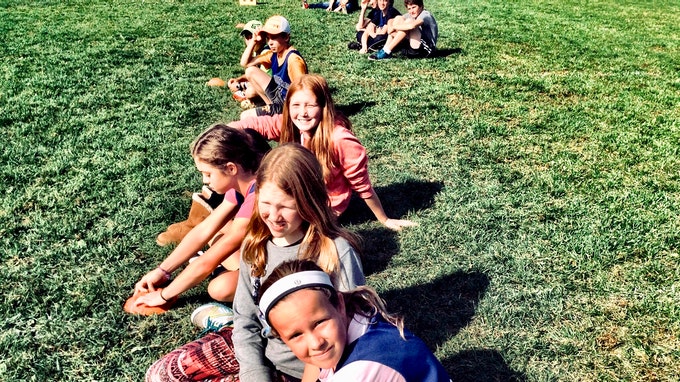Research In Action
Research In Action
Breadcrumb

Over the last several years, we have significantly expanded our knowledge about how to best diagnose and treat pediatric concussion. With an exponential increase of patient visits for concussion in primary and acute care settings, the science of their management is rapidly evolving. Camp providers are well-positioned to diagnose and manage concussion in the camp setting, with a little extra training on the CDC’s current concussion care guidelines.
Let’s test your concussion know-how!
An Exemplar Case at Summer Camp
You are in the health center at a rural sleepaway camp and a counselor brings in a 10-year-old boy who fell off another camper’s back while playing. He fell about 3 feet, hitting the back of his head. He had no loss of consciousness, but was “dazed” after the fall. He got up on his own but was wobbly and did not seem like himself. The camper reported having a headache, and his eyes were hurting from the sun.
Make the Diagnosis
You have established there is no need for a higher level of care or concern for a head bleed, using your own camp’s protocol.
What parts of the above history sway you towards making the diagnosis of concussion?
- Fall, hitting head on ground
- Not acting like himself
- He was “dazed” after the fall
- All of the above
If you chose “4,” you were correct. Concussion is an injury to the head or body that causes one’s brain to shake inside the skull. We see signs and symptoms both immediately following the injury, and also later on when a child tries to increase the demands of the brain (for example, participating in busy or loud group activities). It is not necessary for campers to return home for a formal diagnosis as long as there are no red flags that suggest the need for a higher level of care.
Treat the Concussion at Camp
What level of activity would you recommend as the next step?
- Rest the camper until he is symptom-free for 24 hours
- No formal rest is needed, return the camper to his usual activities
- Relative rest for a short period of time, gradually return to his usual activities
If you chose “3,” you are correct! Gone are the times of sitting in a dark room and doing nothing for several days after a concussion -- thank goodness! Goals of therapy now focus on limiting cognitive, physical and social deconditioning. Evidence suggests that initial treatment of a short period of “relative rest” for one to two days followed by higher levels of activities in short intervals with frequent breaks could be the best approach. Campers may tolerate low-to-moderate levels of non-contact fitness activity. Your camper should gradually return back to his usual schedule in small blocks of time, where there is easy access to rest as needed.
Follow-up with Camper
Your camper muddled through two days of lighter levels of activity that included sitting in a row boat while his counselor rowed for about 30 minutes, attending a camp fire sing-a-long, and doing an arts and crafts sewing project.
Two days after the injury, your camper comes into the health center complaining of a headache that is a 7 out of 10. This is higher than what it’s been since he was injured.
What would be your next intervention?
- Administer an over-the-counter analgesic such as ibuprofen or acetaminophen on a routine basis until he is symptom-free
- Have him take a break in the health center for a short period of time until his headache is back to its baseline level
- Have him take a break in the health center for a short period of time until the headache completely resolves
If you chose “2,” you were correct! While medicines such as ibuprofen or acetaminophen are generally okay to use on a limited basis, excessive use is generally not recommended in concussions. These medications are generally less effective for concussion-related headaches and can result in rebound headaches if used more than three times per week.
Concussion Clearance
Once your camper is able to tolerate his usual camp schedule, including heavier levels of non-contact fitness without symptoms, he may advance to a Return to Play Protocol that allows him to resume sport activity.
If asymptomatic with the protocol, campers may be cleared by a licensed healthcare provider experienced in concussion management.
We recommend that campers see their primary care doctor after returning home from camp as a final check to ensure there are no residual symptoms from the concussion.
Additional Resources
Access this guide for summer camp staff about managing concussions, including a webinar video
Access educational fact sheets, videos and posters
Review CDC’s Guidelines to Improve Care for Children with mTBI

